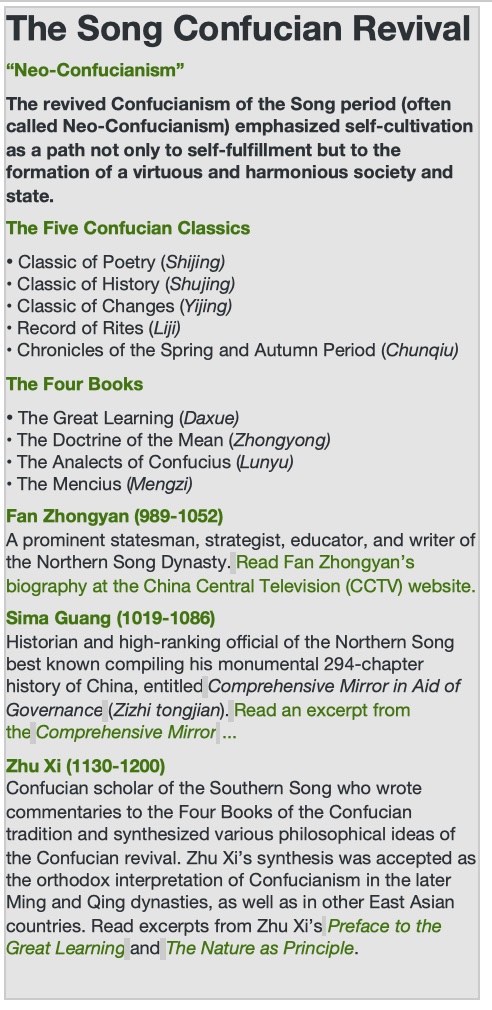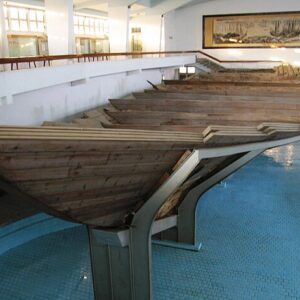This is Day One of a six week course studying the following aspects of Geography and History:
| Unit 2: The Global Tapestry (Population Patterns and Processes) |
| *How states formed, expanded, and declined in areas of the world during the period c. 1200–c. 1450 |
| patterns associated with human populations. |
| Population density and how it affects society and the environment |
| Theories of population growth and decline |
| Population and immigration policies and their effects |
(Thanks to: https://www.freeman-pedia.com/east-asia-global-tapestry)
Welcome to The Global Tapestry of East Asia Day – The Song Dynasty.
Introduction
These are the regions of the world around 1200 to 1450:
- East Asia during the period of 1200-1450 is dominated by the Mongol Invasions.
- The Mongols arrive in 1205 (against the Western Xia).
- Normally, East Asia is the story of China and how much influence they exert in the region. However, for the GLOBAL TAPESTRY period, it’s the story of the Fall and Rise of China along with how the other areas like Korea, Japan, and Vietnam handled these invasions.
Key Points of The History of The Global Tapestry of East Asia
- The Dynasties
- Civil Service Exam
- Mandate of Heaven
- Filial Piety
- Champa Rice
- Grand Canal
- Song Economy
- Patterns associated with human populations
- Population density and how it affects society and the environment
- Theories of population growth and decline
- Population and immigration policies and their effects
The Dynasties
What is a dynasty?
Dynasty means rulers who belong to the same royal family for generations. The term is also used to describe the era during which that family ruled.
What were dynasties?
- The dynasties are numbers 1 to 9.
- The gap between 6 and 7 contained several small dynasties.
- The period of The Global Tapestry only concerns numbers 7 to 8.
- Shang (around 1760-1046 BCE)
- Zhou (1046-256 BCE)
- Qin (221-206 BCE)
- Han (206 BCE-220 CE)
- Sui (581-618 CE)
- Tang (618-906 CE)
- Song (960-1279)
- Yuan (1279-1368)
- Ming (1368-1644 CE)
- Qing (1644-1912)
- Republic Period (1912-1949)
- People’s Republic of China – Starting with Mao Zedong (1949-present)
- https://youtu.be/xJis9TSw1rE?si=Kh_5QqIOUSpcwWLE
Part One: The Song Dynasty (960-1279)

- The Civil Service Exam / Imperial examination became dominant during the Song dynasty (960–1279) and lasted for almost a millennium until its abolition during the late Qing dynasty reforms in 1905. There is a link to listen to this here.
- Mapping the Empire. Li dai di li zhi zhang tu (Handy geographical maps through the ages) is the earliest existing historical atlas of China, first printed during the Song dynasty.
- Confucianism >>>
- Printing (First paper money)
- Navigating the Seas with the Magnetic Compass
- Gun Powder
- First permanent Standing Navy

A Song Dynasty junk ship, 13th century; Chinese ships of the Song period featured hulls with watertight compartments. - The Song regime was the first in China to establish a permanent national navy, functioning as an independent service administered by a central government agency.
- The Imperial Commissioner’s Office for the Control and Organization of the Coastal Areas was established in 1132 to supervise a navy of fifty-two thousand men.
- The Song experience was based on a rapidly expanding national economy, with a particularly strong maritime sector encompassing commerce, fisheries, and transportation.
- As the navy expanded, so did port facilities, supply centers, and dockyards; soldiers were trained specifically as marines, and coast-guard squadrons were established.
- Song navies used both sail and paddle-wheel-driven craft, the latter powered by laborers on treadmills. It also included the development of formation maneuvers, long-range projectile launchers, and complex tactics.
- Landscape Art and Here
- Footbinding – You both read about this and listen here.
- Mongol Invasion (Kublai Khan)
- Ownership of Land (Champa Rice)
Deep Dive Activity
Choose one aspect of the Song Dynasty from the list above and do a deeper dive into it.
Show your findings in whichever manner you choose, including but not limited to:
- talk
- video
- Presentation
- report
- note cards
- poster
Your audience is someone who knows very little, has an interest in history, but limited knowledge of the time period and region.


